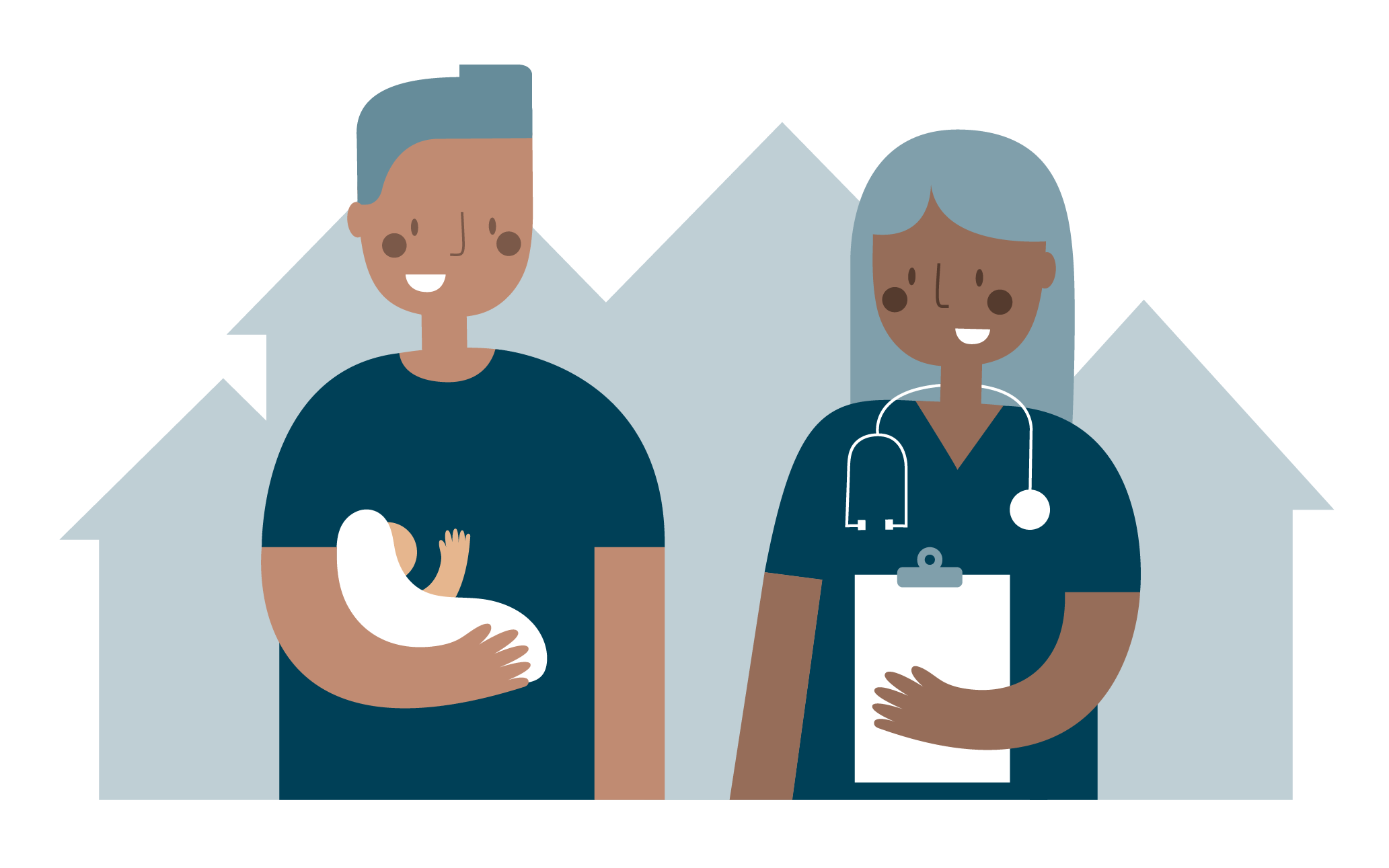Spain
Score: 62
Social Rights Monitor Overview
Spain fared significantly better than most European countries in 2022 due to its relative lack of dependence on Russian oil and gas, but it was still affected by higher-than-normal inflation.[1] However, the National Strategy Group (NSG), led by Movimiento por la Paz, brought attention to several significant problems still affecting Spain, including stubbornly high youth unemployment, poverty and workers’ difficulties in reconciling work and their personal lives. Furthermore, wages have not kept pace with inflation, leading to a decline in real incomes and intensifying the weak wage growth that has plagued Spain since the beginning of the 2000s. The NSG was largely satisfied with many of the measures implemented by the Spanish government during the reporting period, not least the trailblazing Labour Reform of 2021, which successfully reduced precariousness and promoted employment. Similar positive strides include the introduction of a guaranteed minimum income and strengthened access to housing through the Right to Housing law. Another significant success has been the implementation of Just Transition agreements in the coal sector in Spain, allowing for power plants and mines to be closed without abandoning the communities that depended on them. Finally, the processes and institutions of civil dialogue were strengthened during the reporting period.

Score: 63
Equal Opportunities and Access to the Labour Market
Youth access to the labour market
Youth (aged 15-24) unemployment remains one of the most crucial problems facing Spain today. Despite having fallen significantly in the post-Covid recovery, from 38.3% in 2020 to 29.8% in 2022, youth unemployment is still more than double the EU average, which was 14.5% in 2022.[1] The causes of this high rate include the structure of the economy, the widespread use of temporary contracts and the mismatch between the skills young people have and those demanded by employers. Youth employment is concentrated in the services sector, especially low value-added industries such as retail and . Spain’s economy is more dependent on these sectors that struggle to provide full-time permanent jobs, especially for young people, and the sectors thus cause structurally high youth unemployment.[2] Furthermore, the widespread use of temporary contracts reduced the stability of jobs when they were actually found. However, the 2021 Labour Reform, the result of social dialogue, has led to a reduction in the use of fixed-term contracts.[3] Another key reason for high youth unemployment is the imbalance between training received by young people and labour market needs. The employment rate of young people (16-29) with a high level of education was 67.9% in the last quarter of 2022, significantly higher than that of those with a medium or low level: The rate for those with a medium level was 33.9%. Both of these figures are still much lower than the respective pre-crisis levels of 74.3% and 53.4% in 2007.[4]
The Youth Guarantee Plus 2021-2027 programme, which is funded in part by the European Social Fund, is a key measure to promote youth employment and training. Its goal is to find a job or training offer for a young person within four months of them signing onto the programme. However, it is difficult to adequately evaluate the outcomes of the measure, as the government does not provide reliable data on the young people helped.[5]
[1] Eurostat (2023), Unemployment by sex and age: https://ec.europa.eu/eurostat/databrowser/view/UNE_RT_A__custom_6267589/default/table?%20lang=en
[2] Secretary of State for Employment and the Social Economy (2022), Report on young people in the labour market: https://www.mites.gob.es/ficheros/ministerio/sec_trabajo/analisis_mercado_trabajo/jovenes/2022/Junio_2022.pdf
[3] UGT Research Service (2023), Facts and Myths on the Labour Reform: https://servicioestudiosugt.com/hechos-y-mitos-sobre-la-reforma-laboral-2021/
[4] Ibid
<
[5] State Service of Public Employment (2023), Youth Job Guarantee Plus 2021-2027: https://www.sepe.es/HomeSepe/Personas/encontrar-trabajo/Garantia-Juvenil/plan-garantia-juvenil-plus.html

Score: 72
Fair Working Conditions
Wages and employment
Wages in Spain remain low and unequally distributed. Despite an average salary of €25,165 a year in 2020, the median salary was €18,480. The average annual salary grew to €27,483 in 2022, but that remains €10,000 less than the EU average of €37,562. Real salaries in Spain are effectively the same as in 2000, and Spain has had the third lowest increase in wages in the European Union. Wages failed to keep up with inflation in 2022, so real wages fell. Almost a fifth of workers (19.4%) earn below the minimum wage due to underemployment (discussed below), and around 66% earn less than double the minimum wage. There have been some improvements at the lowest end of the wage distribution, as the government and social partners agreed to an increase of 8% in the minimum wage in February 2023. This is now €1,080 a month for workers receiving 14 monthly payments a year or €1,206 for those receiving 12. The minimum wage has increased 64.8% since 2016, although Spain’s minimum wage still lags that of other states, such as France, Germany and Belgium.[1]
The employment situation in Spain has improved in recent years, especially after the Covid pandemic. In April 2022, the number of employed people rose over 20 million for the first time. Unemployment also fell from 13.3% in 2021 to 12.9% in the last quarter of 2022. Both these figures show that the employment situation in Spain is the best since the beginning of the financial crisis in 2008. However, there remains a significant problem of underemployment. In 2022, 2.7 million people (74% of them women) worked part-time, of whom more than half were looking for a full-time job. Low wages and underemployment are at the root of in-work poverty in Spain, which represents a systemic problem, as 12.5% of Spanish workers are at risk of poverty, 3.6 percentage points higher than the EU average. This is coupled with an endemic issue of unpaid work, especially the non-remuneration of overtime. In 2022, total extra hours increased by 14.4%, with 45% unremunerated.[2]
Job security
Spain has made significant progress in improving job security. The Labour Reform of December 2021 has led to a notable decrease in the use of temporary contracts, which fell over the course of 2022 from 25.4% to 17.9% of total contracts mainly due to a reduction of such contracts in the public sector– though Spain still has a higher share of temporary jobs than the eurozone average of 14.6%. The public sector, according to latest figures still has an extremely elevated rate of 30.2% temporary contracts, compared to 14.8% for the private sector.[3]
The majority of new jobs created during 2022 – around 53% of the total – were permanent full-time jobs, while the number of short-time jobs, defined as lasting less than 30 days, fell by 3.2 percentage points over the course of 2022.[4]
The 2021 Labour Reform aimed to increase the quality of employment and reduce precariousness through measures including a reduction in the possible applications of temporary contracts, which now have to be properly justified. Penalties for fraudulent misuse of temporary contracts were also increased. The Reform also reduced to 18 months the period after which a worker on a temporary contract must be offered a permanent position.[5] Despite these successes, much remains to be done to increase job security, especially in the public sector. One example is the need to increase the costs of unfair dismissals.[6]
Work-life balance
The NSG reports that work-life balance has worsened in Spain. Spanish people on average interact with friends and family members far less than before the pandemic. The National Institute for Statistics’ Living Conditions Survey 2022 found that half the Spanish population has frequent meetings with family and friends, whereas the 2015 edition found that 62.5% of Spaniards regularly met family members and 68.3% friends. Similarly, satisfaction with available leisure time worsened by 0.2 points out of 10 in 2022 compared with 2018.[7] Another survey, carried out by the Infojobs employment website, corroborates these findings. Only 35% of respondents in 2022 said that it is “very easy” to reconcile work and personal life, down from 41% in 2021.[8] More positively, the gender aspect of work-life balance has improved in the years since the pandemic, according to a study by a consortium of Catalan universities. Compared with 2020, Spanish women spend on average three hours a week less on childcare – a decline from 33 to 30 hours. The average Spanish man has increased the hours spent on childcare from 16 to 23 hours. Other gender gaps, such as those related to time spent doing unpaid household tasks, have also diminished, although they remain significant.[9]
Some progress is being made in the promotion of a four-day or 32-hour working week. The Spanish Government has recently provided a €9.6 million grant to small and medium enterprises (SMEs) to pilot a four-day week. Participating SMEs must implement a 32-hour working week for two years and, crucially, keep wages at the same level. The grants are capped at €200,000 for each company.[10] A study by the UGT union confederation found that a reduction in working time can help to alleviate high unemployment and improve Spanish workers’ work-life balance and general health and wellbeing.[11]
[1] UGT Research Service (2023): Challenges of the Spanish Economy for 2023: https://servicioestudiosugt.com/retos-de-la-economia-espanola-para-2023/
[2] Ibid
[3] Ibid
[4] UGT Research Service (2023), Facts and Myths on the Labour Reform: https://servicioestudiosugt.com/hechos-y-mitos-sobre-la-reforma-laboral-2021/
[5] UGT Research Service (2023), Main contents modified by the Royal Decree-Law 32/2021: https://www.servicioestudiosugt.com/real-decreto-ley-32-2021-reforma-laboral/
[6] Ibid
[7] National Institute of Statistics (2023), Living Conditions Survey 2022: https://www.ine.es/prensa/ecv_2022_m.pdf
[8] Infojobs (2023), Work-life balance is worsening: only 35% of the employed population say that they are able to reconcile work and family life: https://nosotros.infojobs.net/prensa/notas-prensa/la-conciliacion-laboral-empeora-solo-el-35-de-la-poblacion-ocupada-afirma-que-tiene-facilidades-para-conciliar
[9] The Social Observatory of La Caixa Foundation (2023), Gender inequality in paid and unpaid work in the aftermath of the pandemic: https://elobservatoriosocial.fundacionlacaixa.org/-/desigualdad-de-genero-en-trabajo-remunerado-y-no-remunerado-tras-la-pandemia
[10] Ministry of Industry, Commerce and Tourism (2023), Beginning of the distribution of subsidies for reducing working hours without cutting salaries: https://www.mincotur.gob.es/es-es/GabinetePrensa/NotasPrensa/2023/Paginas/Arranca-el-reparto-de-ayudas-para-la-reduccion-de-la-jornada-laboral-sin-recortar-salarios.aspx
[11] UGT Research Service (2021), For a 32-hour working week: https://servicioestudiosugt.com/jornada-laboral-32-horas/

Score: 46
Social Inclusion and Protection
Poverty eradication
With 20.4% of the population at risk of poverty or social exclusion in 2023, Spain has the fourth highest at-risk-of-poverty rate in the European Union, behind only Romania, Bulgaria and Greece. Poverty in Spain has a distinct regional dimension. Regions to the north of Madrid have poverty rates between 0.8 and 11.5 percentage points lower than the national average, while rates in southern regions are between 1.5 and 10.9 percentage points higher than the average. The rate of severe poverty (defined as living in a household with an income of less than €560 a month) was 7.7%, or 3.65 million people.[1]
Spain has made significant progress in many aspects of poverty eradication, and the total at-risk-of-poverty rate dropped 1.8 percentage points in 2022. This means that 840,000 people are no longer at risk of poverty or social exclusion. The reduction was especially concentrated in particularly vulnerable groups, such as single-parent households, single-person households and unemployed people, even if rates for these groups are still very high. Child poverty fell 1.1 percentage points to 27.8%, and severe material and social deprivation declined too. However, there were setbacks in certain areas. The at-risk-of-poverty rate for retired people increased by 1.2 percentage pointsto 17.4%. Furthermore, there has been a rapid increase in the number of people who cannot maintain an adequate temperature in their homes – 17.1% in 2022 compared with 14.3% in 2021 and 10.9% in 2020. Finally, no progress has been made in closing the gender poverty gap, and women have significantly higher poverty rates than men.[2]
The NSG highlighted several causes of Spain’s high poverty rates, including insufficient incomes, the lack of affordable housing, a saturated labour market unable to provide enough opportunities, a weak social security system, low pensions and children dropping out of school. It also drew attention to the intertwined nature of these problems and the long-term and intergenerational damage they cause. The “Social Shield” put in place by the Spanish Government during the Covid pandemic not only prevented poverty rates from growing, but also went some way to address the issues mentioned above. Temporary measures included the suspension of evictions and a rent freeze, both of which have been reintroduced in a weaker form as part of the Right to Housing Law. Other measures have remained in force, such as the Minimum Vital Income, a guaranteed minimum income introduced in June 2020.
Housing
Access to decent and affordable housing remains a key challenge for Spain. Affordability is an issue for both homeowners and tenants. While obviously in a less precarious position, the monthly mortgage repayments of Spanish homeowners have increased by an average of €290 due to rising interest rates. Rents have also increased greatly, negatively affecting tenants: 39.4% of Spanish tenants allocate more than 40% of their incomes towards rent, compared the EU average of 21.2%. Half of tenants are therefore at risk of poverty or social exclusion, compared to the EU average of 33.2%. Evictions skyrocketed to more than 40,000 in 2022, a daily average of 104. One of the reasons for this crisis is the almost complete degradation of public housing. Public housing represents only 2.5% of Spain’s total stock, compared to the EU average of 9.5%. Spain would need to build 1.5 million public housing units to reach this average. Another issue raised by the NSG is the large increase in tourist housing, which grew 7% in 2022. There is a distinct need to control this growth, as it has made entire neighbourhoods inaccessible to locals due to rapidly rising prices.[3]
| Good practice: Right to Housing Law
After three years of discussion, including with social partners, Spain approved its first Right to Housing Law in 2023. Regional governments have been given the right to declare housing stress areas, which allows them to force large landlords to reduce rents and smaller landlords to freeze them. The government has also announced its intention to build 184,000 units of social housing (although this is a long way from the 1.5 million needed to reach the EU average). Finally, the state will cover 20% of the mortgages of families (with children) earning less than €37,8000 a year through a guarantee of the National Institute of Credit (ICO).[4] |
[1] Eurostat (2023), Living conditions in Europe – poverty and social exclusion: https://ec.europa.eu/eurostat/statistics-explained/index.php?title=Living_conditions_in_Europe_-_poverty_and_social_exclusion
[2] European Anti-Poverty Network Spain (2023), Report on the state of poverty 2022: https://www.eapn.es/estadodepobreza/descargas.php
[3] UGT Research Service (2022), Proposal for a Protection Fund against the increase in mortgage costs: https://servicioestudiosugt.com/propuesta-de-fondo-de-proteccion-frente-al-aumento-del-coste-hipotecario/
[4] Official State Bulletin (2023), Right to Housing Law: https://www.boe.es/buscar/act.php?id=BOE-A-2023-12203

Score: 42
Civic Space
Social dialogue
The government and social partners concluded 14 far-reaching agreements between 2020 and 2023 in Spain. These covered a wide range of highly pertinent issues, such as the furlough system, labour reform, changes to the pension law, the telework law and the Rider Law.[1] The involvement of the social partners in the elaboration of these important policies avoided the tensions witnessed in other European countries where governments unilaterally imposed such reforms. It also improved the quality of these policies through effective communication of the needs of both workers and businesses. The Labour Reform exemplifies this dialogue. It combined the desire of workers for more-stable and more-secure contracts with the aspiration of businesses for a more productive labour market. The Labour Reform also restored the status of the sectoral collective agreement as superior to company-level agreements, meaning firms are now unable to subcontract in order to lower wages. In addition, the law foresees the automatic extension of existing collective agreements in the absence of a replacement agreement, removing any incentive employers had to not negotiate a new collective agreement. These reforms have strengthened social dialogue in Spain after a decade in which it was devalued following the 2012 Labour Reform.[2] Effective social dialogue facilitates the identification of balanced and shared solutions, broadens democracy and provides much greater legitimacy to regulations. However, it can only be achieved in an environment of full respect for freedom of association and collective bargaining rights.[3]
Civil dialogue
Dialogue between civil society organisations and the government is conducted through the Civil Dialogue Commission, created in 2013. Since its creation, the Commission has led to the elaboration of various policies and regulations, especially those aimed at improving the quality of life of vulnerable people and the promotion of the third sector. This work was strengthened during 2022, when the Commission’s internal regulations were updated, and a Royal Decree was elaborated on third-sector actors cooperating with the state administration. Two calls for subsidies were published after being discussed in the Commission: funding for the implementation of activities of social interest and subsidies to support the modernisation of third-sector entities. The NSG also reported that the Commission was involved in the development of several legislative initiatives, including the Volunteering Law, the State Strategy for Deinstitutionalisation, the National Goals for the reduction of general poverty and the National Reform Plan. Most notably, Spain’s new Law on Cooperation for Sustainable Development and Global Solidarity of 2023 was elaborated with the full cooperation of relevant civil society actors. This law strengthens Spain’s commitment to international aid and development and aligns policy with Agenda 2030, gender equality and economic justice. The CIVICUS monitor of civic space classifies Spain as a country in which civic space is narrowed,[4] partially due to the continued stalling of a satisfactory reform of the law on Citizens‘ Security. The law was heavily criticised by the UN, the Council of Europe’s Venice Commission and the European Commission as being a threat to fundamental rights and the rule of law.[5]
 elDiario.es (2022), Spain becomes the world example of social dialogue due to agreements such as labour reform and ERTE: https://www.eldiario.es/economia/espana-convierte-ejemplo-mundial-dialogo-social-acuerdos-reforma-laboral-erte_1_9675455.html
[2] Servicio de Estudios UGT (2023): ”Main contents modified by the Royal Decree-Law 32/2021”: https://www.servicioestudiosugt.com/real-decreto-ley-32-2021-reforma-laboral/
[3] Global Deal (2022), Global Deal Forum 2022 – Summary Report: https://www.theglobaldeal.com/resources/Summary-report-Global-Deal-Forum-2022.pdf
[4] CIVICUS (2023), Monitor 2023 – Spain: https://monitor.civicus.org/country/spain/
[5] CIVICUS (2022), Citizens’ Security Law under reform, Rule of Law in Spain at stake: https://www.civicus.org/index.php/media-resources/media-releases/open-letters/5593-citizens-security-law-under-reform-the-right-to-freedom-of-peaceful-assembly-and-expression-rule-of-law-in-spain-at-stake

Score: 71
Just Transition
Spain has pledged in its Climate Change and Energy Transition Law to reduce its emissions by 23% by 2030 compared to 1990 levels and to achieve climate neutrality by 2050. Unlike many other developed countries, Spain has put the concept of the Just Transition at the very heart of its climate plans. The Spanish government launched the Just Transition Strategy in 2019, which focusses especially on communities in which coal mines and coal-fired power stations are located. The strategy included the creation of the Just Transition Institute, a public body attached to the Ministry for Ecological Transition and Demographic Challenge with exclusive competences to implement Just Transition policies. This has led to tripartite agreements on the closure of coal mines and coal-fired power plants signed by the government, trade unions and companies, as well as the signing of 13 Just Transition Agreements (JTA). JTAs are regional tripartite agreements in areas at risk of being negatively impacted by the ecological transition. The agreements aim to maintain and create employment, promote economic diversification and prevent the depopulation of these largely rural areas. JTAs are intended to involve all forms of interested actors in an area, including social partners, educational institutions and civil society.[1] All 15 of Spain’s coal-fired power stations are to be closed under the tripartite agreement. However, the 3,000 or so workers employed in these power stations will benefit from measures to protect their employment and give them training in skills required for the ecological transition.[2] Spain has almost completely ended its dependence on coal for energy generation and in 2022 generated some 43% of its electricity from renewable sources, with another 10% coming from nuclear.[3] Although data for 2023 still has yet to be released, it is possible that Spain’s share of renewables in its electricity generation hit 50%, given that 5.9 GW of renewable power capacity was installed in 2022.[4]
Spain followed Germany in introducing a public transport subsidy in 2022 to provide support for residents suffering from the rising cost of living and promote sustainable transport. Originally planned as a 50% reduction in the price of commuter railway season tickets, the measure was eventually implemented as a free ticket. The government also reduced municipal bus fares by 30%, and regional governments contributed to cut bus fares in some areas by as much as 60%.[5] Finally, the government extended the rail discounts to inter-city bus travel at the end of 2022, a measure that was expected to save over 1 million tons of CO2 in 2023.[6]
[1] Ministry for the Ecological Transition and Demographic Challenge (2022), Spain, towards a Just Transition: https://www.transicionjusta.gob.es/Documents/Noticias/common/220707_Spain_JustTransition.pdf
[2] industriALL Europe (2023), Just Transition – Spain: https://justtransition.industriall-europe.eu/national/Spain
[3] IEA (2021), Spain: https://www.iea.org/countries/spain
[4] Red Eléctrica (2023), Renewable energy could account for 50% of Spain’s electricity generation mix in 2023: https://www.ree.es/en/press-office/news/press-release/2023/03/renewable-energy-could-account-for-50percent-of-spains-electricity-generation-mix-in-2023
[5] Bloomberg (2022), Madrid and Barcelona Win From Spain’s Free Train Travel Plan: https://www.bloomberg.com/news/articles/2022-07-15/spain-will-introduce-free-train-travel-to-help-ease-the-cost-of-living
[6] Eltis (2022), Spain will make public long-distance buses free to use in 2023: https://www.eltis.org/in-brief/news/spain-will-make-public-long-distance-buses-free-use-2023


